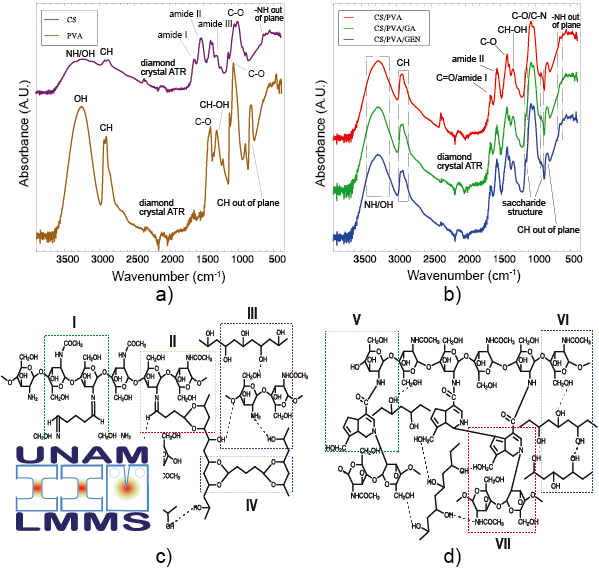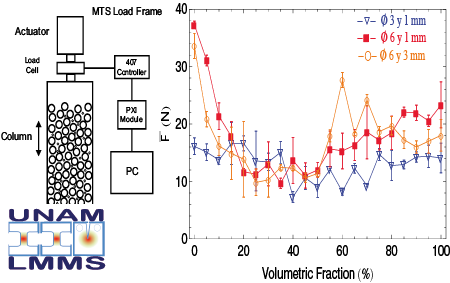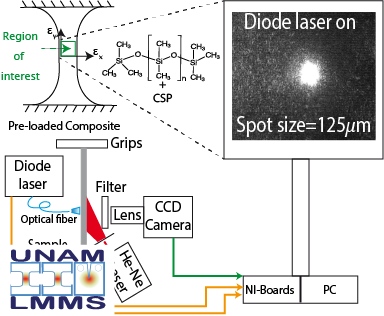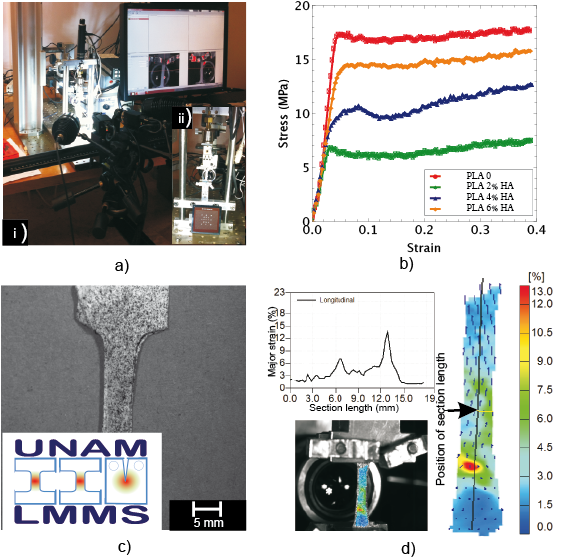Current Research Topics
Hybrid hydrogels

The life expectancy of human beings has increased in recent years thanks to medical innovations; undoubtedly, material science and engineering have contributed significantly, particularly the study and development of soft biomaterials that must be compatible with human tissue and homeostatic processes. Hybrid hydrogels are considered as an alternative in tissue repair. However, these materials present a complex mechanical behavior with a high degree of non-linearity; this might be due to their intrinsic structural variability. That it is why micromechanical studies are needed. They allow understanding of the micromechanisms of deformation and their contributions to these materials' macromechanical response as elastic modulus. Tunning these materials' physicochemical and mechanical properties will improve their biological response and be widely used on biomedical applications.
Granular materials

Granular flows are relevant because of their ubiquitous presence in nature and industry, such as pharmaceuticals, food, mining, and construction. Although there are many applications where the flow of granular media is involved, most problems are still solved based on empirical knowledge. In order to have a better understanding of granular materials behavior, theoretical and experimental studies have to be conducted.
Smart Nanocomposites Membranes

The continuous evolution of materials science and engineering relies on developing novel materials with new and improved attributes. An example of this is the smart nancomposites based on PDMS and carbon nanoparticles that has been used as coating films on Ni-Ti Shape memory alloy (SMA). Thus the combination of the photothermal and double way shape memory effects through the laser triggering based on optical absorption, heat generation and dissipation within the alloy leads to optically driven actuators.
Macro and micromechanical responses of electrospun scaffolds

According to the organ procedure transplant network (OPTN) and the Scientific Registry of Transplant Recipients (SRTR) databases (USA, March 13, 2015), approximately 134,621 persons require a lifesaving organ transplant; some of them will die each day while waiting for one. Although the number of donors has increased, up to 30% of removed organs are discarded, primarily due to their poor quality tissue; in addition to this issue, the host often presents complications, such as infections or even rejection of the tissue/organ after transplantation. To address this problem, tissue engineering and materials science are focused on developing new materials and techniques that allow for the satisfactory replacement of native tissue.
Shape memory alloys
The study and development of new materials have been used to forge new technology. Shape memory alloys (SMA’s) have been cataloged as new materials with applications are in fields like the construction industry where these materials have been used as mechanical elements of damping; in medicine, SMA’s have been used for biomechanical prosthesis in order to correct the position of bones and also to make surgical instruments. In these applications, because of their mechanical, SMA’s can substitute more efficiently, conventional materials. To get a better understanding of SMA’s, new investigations are needed and new applications of these materials will satisfy the ever-demanding human needs.